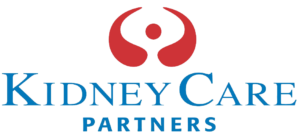New 5-Star Dialysis Facility Rating System To Debut
November 25, 2014
Published by Renal & Urology News
Tammy Worth
November 25, 2014
In January, the Centers for Medicare and Medicaid Services (CMS) will be rolling out its second major 5-star rating system, Dialysis Facility Compare.
The site will tabulate publicly reported quality measures including transfusion rates, mortality and hospitalizations, blood calcium levels and Kt/V values to create a ranking system for dialysis providers. Some suspected it might be delayed, but CMS recently announced they will be moving forward with the January 1 publication.
The industry has been dissatisfied with the rating system – much like nursing homes were with theirs when it was launched – but it appears to be here to stay. Here’s what you need to know about the rankings and how they can be managed.
Problematic equations
Edward Jones, MD, chairman of Kidney Care Partners, said the idea of rating providers isn’t inherently a bad idea, but there are a few critical faults with CMS’ system. The major one is its bell curve, which requires at least 30% of facilities fall in the 1-star and 2-star categories even if there are only minor differences separating them with higher-ranking peers.
Other ratings systems, like the ESRD Quality Incentive Program (QIP), allow any number of facilities that meet performance standards to rank highly. For instance, more than 70% of facilities have typically succeeded in meeting or exceeding set benchmarks.
Jones said there is a better way to measure and rate these facilities because the data are not reliable, and some measures are not actionable by facilities. Jones said his practice has a mortality rate that approaches zero and their accuracy measurements on dialysis range from 80% to 90%. Still, his group, Delaware Valley Nephrology and Hypertension in Philadelphia (that he describes as a Cadillac of dialysis units) has only 3 stars on the rating system.
“There is no reason you can’t have 50% to 60% get 5 stars when they earn it,” Jones said. “You are forcing output into a bell-shaped curve … and it sends a mixed message to patients and that is our concern.”
Impact
But do patients really use these ratings systems? Many people say no. Dave Gifford, senior vice president for quality and regulatory affairs at the American Health Care Association, said he hasn’t seen patients using Nursing Home Compare as expected initially.
“Consumers haven’t really used it much,” he said. “They really look at location.”
Patients expect healthcare providers to meet certain standards and, unless there is a highly reported issue, they assume all providers offer about the same quality of services, said Kim Fox, vice president of the healthcare marketing firm Jarrard Phillips Cate & Hancock, Inc. in Brentwood, Tenn.
Most often, they choose providers by asking friends, family, and their primary care physician, Fox said. They look for places that are close to home, particularly with a frequent treatment like dialysis. They want a good personal experience and they will go where they have insurance coverage.
Consumers may not be wide users of the ratings, but Gifford said the nursing home industry has seen them used broadly in many different sectors. Managed care companies and Accountable Care Organizations are using them to determine network selection and provider partnerships. Banks use them to determine loan eligibility and insurance providers to negotiate fees.
Gifford said it is clear that the CMS ratings aren’t always perfect, but overall, Nursing Home Compare has been good for the industry.
A number of centers have set goals by the standards and chains use them to hold their networks accountable for their staffing ratios and quality specifications used in the system.
“Overall it has brought focus to the industry and gave targets where people can strive to improve care,” he said. “There are hundreds of things to work on at the centers but now we know where to focus to make changes.”
Crafting a response
Because providers know the rankings are coming and have an idea of where they will fall in line, Fox said the most important thing to do is take charge of your message. Each organization should understand how they will define and talk about quality. Find out how patients define quality and use that as a parameter for the message.
The star ratings can be confusing for patients, so she hesitates to place too much focus on it if a center gets a 4 or 5. If a group earns 1 or 2 stars, she recommends owning it. Don’t fall into the trap of using the blame game, Fox said.
Saying the score is the fault of the system will sound defensive. Never put the focus on patients. Saying things like, “Our patients are sicker than everyone else’s,” or, “We are low on a measurement because it’s out of our control; the patients aren’t following care instructions,” is a big no-no in her book.
Instead, say you are committed to providing quality care, and you are working on an actionable plan to increase your score. If you are already making strides or working in certain areas, talk about it. The current data on the site is from 2013. Some data are updated quarterly and some annually. That provides an opportunity to show that you have since made improvements in various areas.
“Recognize that people are going to see it,” she said. “Tell them how you approach quality and how you are improving it.”
Jones said he plans to tell patients that the system should only be looked at along with other measures. He publishes QIP data on the bulletin board every fall for patients to see and plans to tell them it is a better barometer than CMS’ system.
See the original article here.
